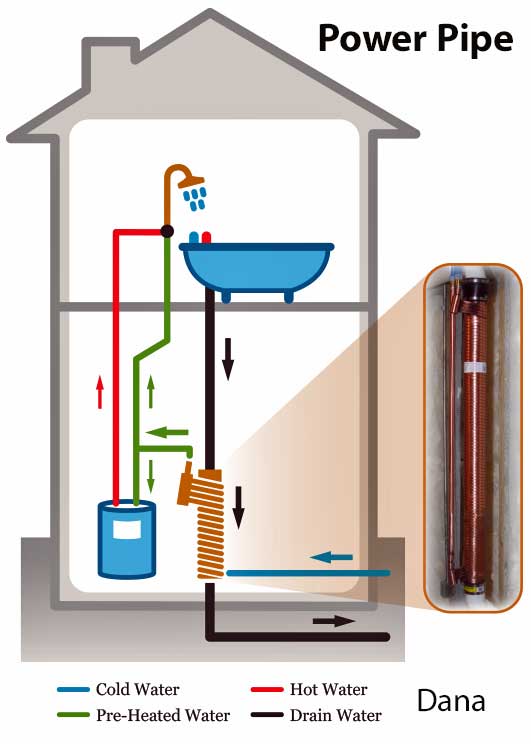I've had to re-design this system today, mostly because of one factor I hadn't taken into account: the potential for Legionnaire's disease.
My original plan was to have a 119 gallon indirect-heated water tank heated to around 110F by a boiler loop from the wood stove. This however is also within the ideal temperature range that promotes the growth of the bacteria that causes Legionnaire's disease. The water tank would only be heated to that temperature if I were home with a fire going in the boiler stove, nevertheless there could be circumstances when that water could be sitting in the holding tank for a couple of days at 110F not being used. The tank I'd planned on using really should only be used when it's connected to an energy source capable of getting the water up to 140F.
I also learned today that the GFX system I'd planned on using was about 50% more expensive than I was anticipating, so I've chosen a smaller (and less robust) model. I'm no longer going to be using a water tank that is preheated with a boiler loop, but am simplifying to a 119 gallon uninsulated pressurized well water tank. I will be keeping the two original Noritz tankless water heaters, but scaling back from taking two 30 minutes showers daily, to two 20 minutes ones.
One aspect of the original design I have decided to keep is the ESSE Ironheart stove with the 16,000 BTU/hr boiler loop. It's a pretty weak boiler for preheating a tank of water, but it's sufficient to accomplish three things for me six months out of every year:
It'll provide the BTUs necessary for three hydronic radiators: 1) in the home office (7,440 BTUs); 2) in the basement mechanicals room (2,860 BTUs); and 3) on the enclosed back porch (5,430 BTUs.)
If I'm able to keep the ambient temperature in the mechanicals room at 75F, I'm betting both the uninsulated well water tank and the copper GFX coil (when not in use) should stay around 75F, increasing their effectiveness. I can't help but think that all of that copper in a 55F room is going to take a bit longer to preheat the water going through it than the same copper would in a 75F room. The new GFX system will be comprised of
two identical 80" columns exactly like this, connected at the top by a copper manifold. It will supposedly have the capacity to increase the water temperature 17 degrees (rather than the 24 degrees of the previous GFX) before it enters the pair of tankless water heaters, requiring an average annual rise in water temperature of 42 degrees (from 68F to 110F.)
How do these changes affect the final numbers? The components of the shower/hot water system are less expensive by about $3,500, but the cost per shower goes up accordingly. My two 20 minute showers/day (300 gallons each) will now require a total of 2.4 gallons of propane/day at a cost of around $2.80/each (as opposed to the original $2.40/each for 30 minute showers.)
* * * * *
Does anyone see a danger in having a mechanicals room heated to 75F by a hydronic radiator?
John

